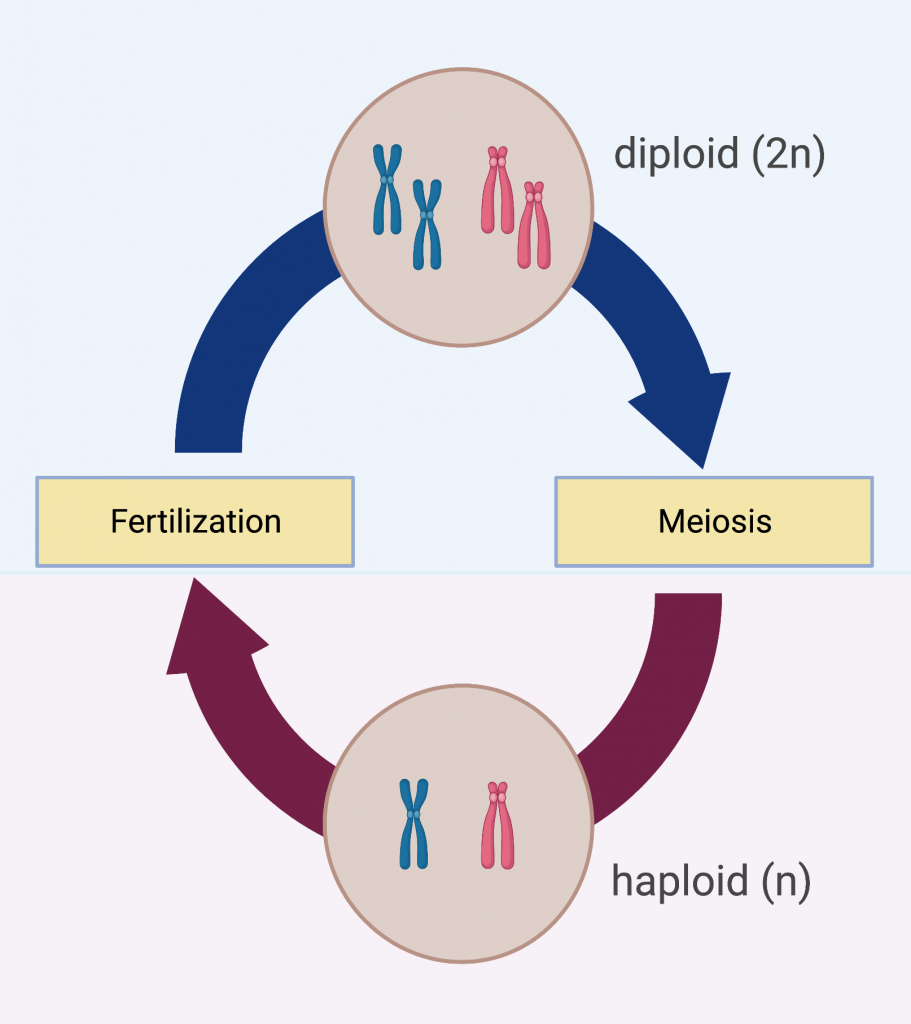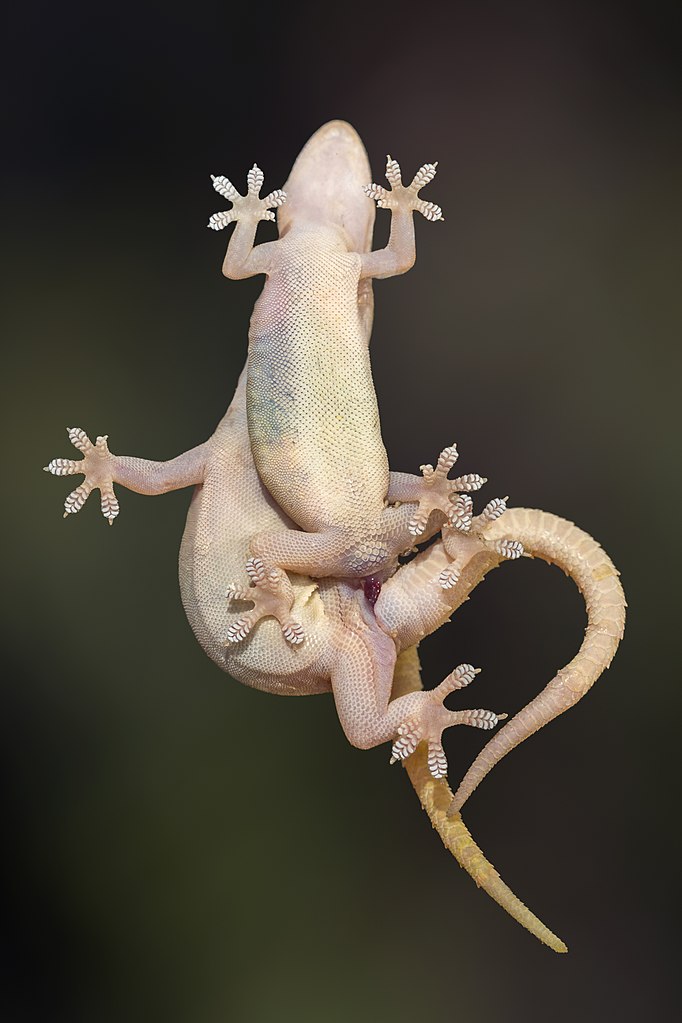18.1 Sexual Reproduction
The ability to reproduce is a basic characteristic of all organisms. Although many unicellular organisms and a few multicellular organisms can produce genetically identical clones of themselves through asexual reproduction, many single-celled organisms and most multicellular organisms reproduce regularly using another method—sexual reproduction. This highly evolved method involves the production by parents of two haploid cells and the fusion of two haploid cells to form a single diploid cell—a genetically unique organism. Haploid cells that are part of the sexual reproductive cycle are produced by a type of cell division called meiosis. Sexual reproduction, involving both meiosis and fertilization, introduces variation into offspring that may account for the evolutionary success of sexual reproduction. The vast majority of eukaryotic organisms, both multicellular and unicellular, can or must employ some form of meiosis and fertilization to reproduce.

Sexual reproduction requires the union of two specialized cells, called gametes, each of which contains one set of chromosomes. When two gametes unite, they form a zygote, or fertilized egg that contains two sets of chromosomes. (Note: Cells that contain one set of chromosomes are called haploid; cells containing two sets of chromosomes are called diploid.)
Since fertilization combines the genetic contents of two cells (egg and sperm) to produce the next generation of organisms, sexual reproduction must involve a nuclear division that reduces the number of chromosome sets by half. Otherwise each new generation of individuals would contain double the chromosome number of the previous generation. This type of cell division is called meiosis.
Most animals and plants and many unicellular organisms are diploid and therefore have two sets of chromosomes per somatic cell (all cells of a multicellular organism except the gametes or reproductive cells). The two copies of each chromosome type are homologous with respect to one another, meaning that they contain the same genes in identical locations along their lengths. Diploid organisms inherit one copy of each chromosome type from each parent.
Sexual reproduction was likely an early evolutionary innovation after the appearance of eukaryotic cells. It appears to have been very successful because most eukaryotes are able to reproduce sexually and, in many animal species, it is the only mode of reproduction. And yet, scientists also recognize some real disadvantages to sexual reproduction. For instance, if the parent organism is successfully occupying a habitat, genetically identical offspring with the same traits should be similarly successful. Furthermore, asexual reproduction does not require another individual of the opposite sex. Indeed, some organisms that lead a solitary lifestyle have retained the ability to reproduce asexually. Theoretically, in asexual populations, reproduction would occur twice as quickly since sexual populations require two individuals to reproduce.
Nevertheless, multicellular organisms that exclusively depend on asexual reproduction are exceedingly rare. Why sexual reproductive strategies so common? These are important (and as yet unanswered) questions in biology, even though they have been the focus of much research beginning in the latter half of the 20th century. There are several possible explanations, one of which is that the genetic variation that sexual reproduction creates among offspring is very important to the survival and reproduction of the population. Thus, on average, a sexually reproducing population will leave more descendants than an otherwise similar asexually reproducing population. The major (and sometimes only) source of genetic variation in asexual organisms is mutation. Mutations are also the ultimate source of variation in sexually reproducing organisms. However, in contrast to mutation during asexual reproduction, these mutations during sexual reproduction can be continually reshuffled from one generation to the next when different parents combine their unique genomes to produce different combinations of genetic variation.

haploid reproductive cell (sperm or egg) that fuses with another haploid cell during fertilization
a cell formed by the union of two gametes; the first cell of a new individual
type of cell division that results in cells with half of the genetic material of the parent cell; used to produce gametes
cell, nucleus, or organism containing two sets of chromosomes (2n)
chromosomes of the same morphology with the same genes in the same location; diploid organisms have pairs of homologous chromosomes (homologs), with each homolog derived from a different parent

